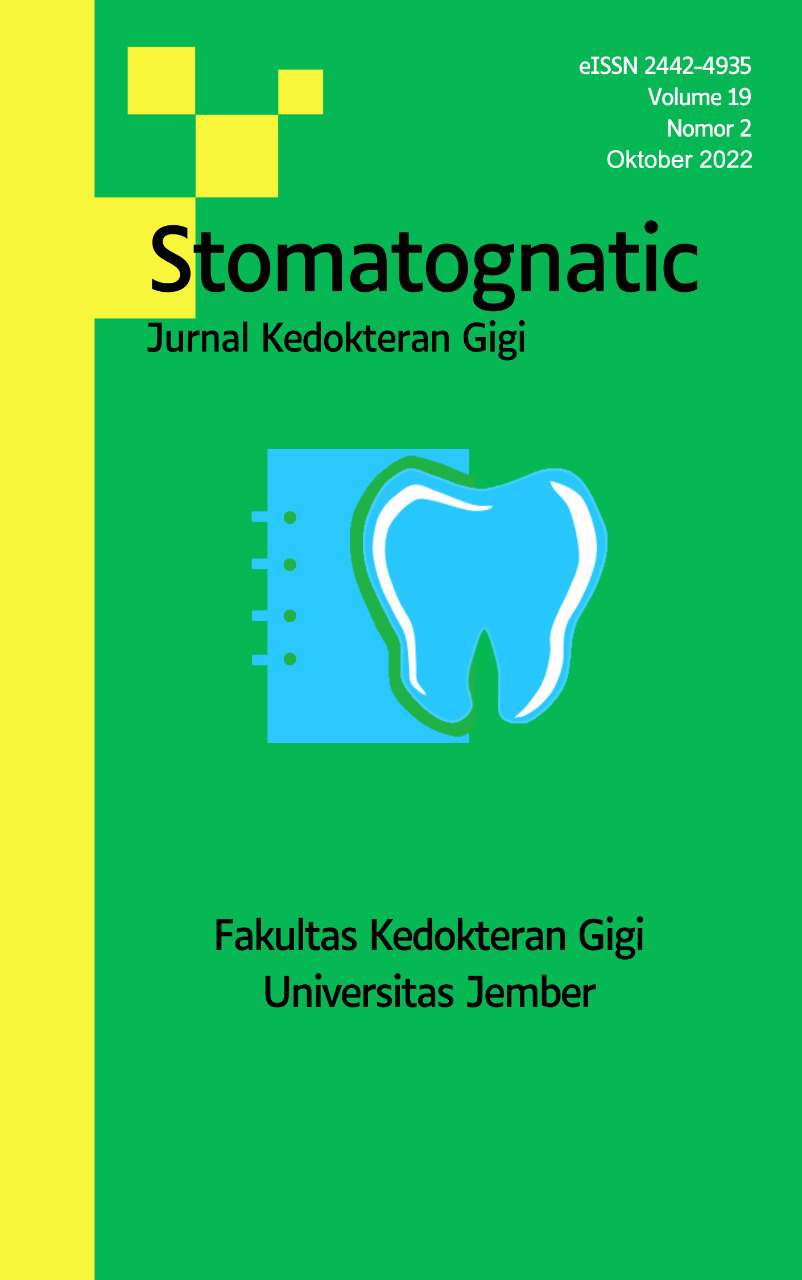Hubungan Underweight dengan Pertumbuhan Maksila
DOI:
https://doi.org/10.19184/stoma.v19i2.34735Keywords:
Body Mass Index (BMI), Maxillary Growth, Cephalometric Radiograph, UnderweightAbstract
Maxillary growth can be assessed from linear measurements, which is the length of the maxilla. The process of growth and development of the maxilla is influenced by several factors, one of which is nutrition. Inadequate nutritional status can interfere with maxillary growth and development. To determine whether there is a relationship between underweight and maxillary growth. Samples were lateral cephalograms and patient data from the Department of Orthodontics, Faculty of Dentistry, The University of North Sumatra who met the inclusion and exclusion criteria. The total sample was 100, consisting of 50 underweight patients and 50 normal-weight patients. The Data was obtained from examination of the Body Mass Index, measurement with the ratio of body weight and height squared then adjusted to the BMI criteria according to the Indonesian Ministry of Health in 2010, then the maxillary length was measured on the cephalogram based on the Anthanasiou method using the CorelDraw application. Data were statistically analyzed using the independent t-test to see if there was a relationship based on maxillary growth (p <0.05). The results of this research stated that mean maxillary length in the normal-weight patient group was 115,824 ± 5.56 mm higher than the underweight patient group of 101.875 ± 4.45 mm. There was a difference in maxillary length between the normal-weight patient group and the underweight patient group (p <0.05). The conclusion from this research that there is a relationship between underweight and maxillary growth.







